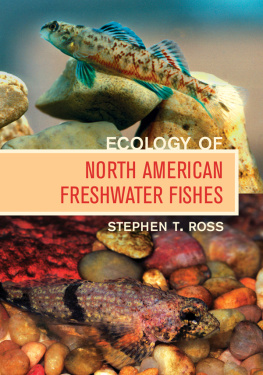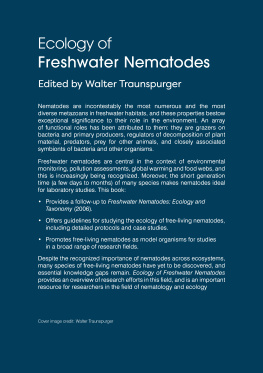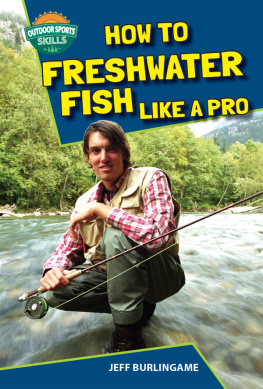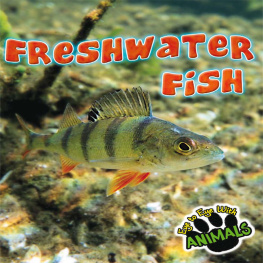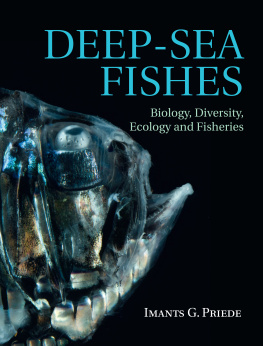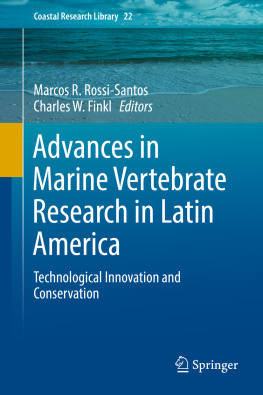
THE STEPHEN BECHTEL FUND 
IMPRINT IN ECOLOGY AND THE ENVIRONMENT
The Stephen Bechtel Fund has established this imprint to promote understanding and conservation of our natural environment.
The publisher gratefully acknowledges the generous contribution to this book provided by the Stephen Bechtel Fund.
ECOLOGY of NORTH AMERICAN FRESHWATER FISHES
ECOLOGY of NORTH AMERICAN
FRESHWATER FISHES
Stephen T. Ross

UNIVERSITY OF CALIFORNIA PRESS
Berkeley Los Angeles London
I dedicate this book to Yvonne Y. Ross, my wife, best friend, willing editor, and enthusiastic field partner for more than 43 years. This book would not have been possible without her constant encouragement and support.
University of California Press, one of the most distinguished university presses in the United States, enriches lives around the world by advancing scholarship in the humanities, social sciences, and natural sciences. Its activities are supported by the UC Press Foundation and by philanthropic contributions from individuals and institutions. For more information, visit www.ucpress.edu.
University of California Press
Berkeley and Los Angeles, California
University of California Press, Ltd.
London, England
2013 by The Regents of the University of California
Library of Congress Cataloging-in-Publication Data
Ross, Stephen T.
Ecology of North American freshwater fishes / Stephen T. Ross.
pages cm
Includes bibliographical references and index.
ISBN 978-0-520-24945-5 (cloth : alkaline paper)
eISBN 9780520955196
1. Freshwater fishesEcologyNorth America. I. Title.
QL625.R67 2013
597.176dc232012043368
19 18 17 16 15 14 13
10 9 8 7 6 5 4 3 2 1
The paper used in this publication meets the minimum requirements of ANSI/NISO Z39.48-1992 (R 2002) ( Permanence of Paper ).
Cover design: Glynnis Koike.
Cover images: Tombigbee Darter ( Etheostoma lachneri ), top; photo by author. Banded Sculpin ( Cottus carolinae ), bottom; photo by Tom Kennedy.
CONTENTS
|
|
For a downloadable PDF of all tables, go to ucpress.edu/go/northamericanfishes. |
PREFACE
The North American freshwater fish fauna, the most diverse temperate fish fauna in the world, is also one of the best-studied fish faunas. The taxonomy, systematics, and biology of the fish fauna are treated in a number of excellent books, largely organized by country, province, or state, and by a forthcoming three-volume series treating the entire North American fish fauna on a family-by-family basis (Warren and Brooks, in press). Given the amount of information available, the time is right for an ecological text that also focuses on the North American ichthyofauna. There have been excellent books dealing with ecology of fishes, but none have had their primary emphasis on the North American freshwater ichthyofauna (the fishes occurring in Canada, the continental United States, and the temperate regions of Mexico).
Foremost in writing this book, I have tried to convey the amazingly interesting and exciting things that we know about fishes. In doing this, however, it soon becomes apparent that most of what is known about a particular aspect of fish biology is often based on only a small fraction of the total number of fish species, or only on a small part of a species range. Part 1 of the text provides a broad picture, both spatially and temporally, of the derivation of the North American freshwater fish fauna. This includes examples of how global as well as North American geological and climatological processes have shaped the fauna. Part 2 focuses on how local populations and assemblages are formed and how they persist, or not, through time. Part 3 deals with the relationship of body-form and life-history patterns as they are related to ecological functions. The wide range and complexity of interactions among individuals and species through communication, competition, predation, mutualism, and facilitation are the topics of Part 4. Part 5 focuses on several primary conservation issues concerning fish populations. It also integrates much of the information presented in the first four parts. The organization of the book is intended to lead the reader from a broadscale appreciation of why specific species and assemblages occur in particular places to a finer-scale look at how individuals and species interact with each other and with their environments, how such interactions have been altered by anthropogenic impacts, and the relative success of efforts to restore damaged ecosystems.
Even though the emphasis is on studies of North American fishes, I have included pertinent examples from other continents. Because the methods or concepts that form the basis for understanding fish ecology and conservation come from diverse areas (systematics, statistics, population ecology, molecular genetics, stable isotope analysis, environmental ethics, etc.), the chapters also include text boxes that help to provide additional background information.
The intended audience for this book includes upper-level undergraduate students, graduate students, professional fish biologists, and anyone else curious about or with a passion for fishes. Students using this book would benefit from having taken a general biology sequence. A general ecology course, although not absolutely necessary, would also provide helpful background. The book should be appropriate for use in one or two-semester undergraduate and/or graduate courses in fish ecology.
ACKNOWLEDGEMENT
My initial involvement with this book happened at the suggestion of William J. Matthews. I thank Bill for encouraging me to take on this task, for his confidence in my ability to complete it, for his many helpful suggestions along the way, and for providing the foundation for this work, and many others, through his monumental book Patterns in Freshwater Fish Ecology . I especially appreciate Chuck Crumly at the University of California Press for inviting me to write a textbook on the ecology of North American freshwater fishes. I thank Lynn Meinhardt, also of the University of California Press, for her helpful comments and encouragement throughout.
During my work on this book I have benefited greatly from the support of my colleagues at the University of New Mexico, Museum of Southwestern Biology and the Department of Biology, particularly Tom Turner, Manuel Molles, and Alexandra (Lex) Snyder. I thank Tom for his helpful comments and suggestions during the course of this project, and for the opportunity to present some of the chapter contents for discussions with the Turner lab group. Manuel, a textbook author himself, has been more than patient in guiding me through the intricacies of textbook writing and in vetting my use of ecological terms and concepts. I appreciate Lex, who has always been supportive and has made resources of the Division of Fishes readily available to me. I am grateful to Steve Platania, Rob Dudley, Howard Brandenburg, and Mike Farrington of the Museum of Southwestern Biology (MSB) and American Southwest Ichthyological Researchers (ASIR) for providing help with literature and for giving me access to unpublished data. Howard Brandenburg also provided slides of the San Juan River, and I thank both Howard and David Propst, formerly of New Mexico Game and Fish, for giving me permission to use Howards outstanding drawings of New Mexico fishes. I also thank Tom Kennedy for generously allowing me to use his photographs of southwestern fishes and Trevor Krabbenhoft for providing larval fish pictures. The faculty and staff of the Interlibrary Loan Department of the University of New Mexico have provided exceptional help throughout the duration of this book. Indeed, without their assistance this book would not have been possible.
Next page
